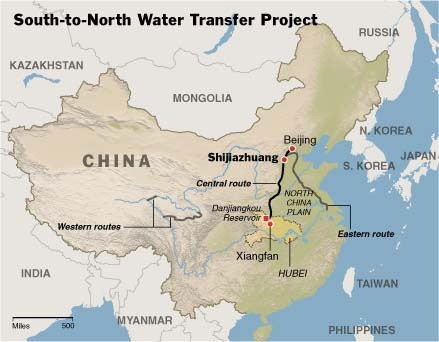I'm going to assert that the issue of 'ghost cities' in China is (being tactful) a distortion of what is happening in China, and I will go on to demonstrate that.
But, first I want to discuss how we 'see' the world. We see the world from the persective of our own individual experience. Our western cities (these days) change little. And, that's how we westerners 'see' the world. For whatever reasons China is different. Things happen differently. Consider the Great Wall of China, its not unique, as every UK resident knows, the Romans also built walls, as did the Iranians, and many, many ancient cities. (In China, the Nanjing city wall, Xian city wall and Pingyao city wall are all mostly extant and give you an idea how impressive they must have been). But commencing around 200 BCE the Chinese started building this huge system of defensive/offensive walls that totalled over 6000 km. The people who commenced it had a vision in mind, but a long term way of seeing things:

The roots of the Chinese Civil Service that controlled these building programs already existed, and have continued almost continuously for 2000 + years, and continue to provide the basis for the administration of the nation.
Almost in the same era, the Grand Canal of China was built, near 2000 km of waterways connecting the north of China to the south, providing a safe method of travel from north to south and in many sections still in use.

The Chinese way of thinking was copied by surrounding peoples, who (at times) managed to conquer much of China. These people copied the Chinese way, usually absorbing the civil service into their own administrations.
This thinking still exists today. Starting 2007, the national government approved the building of a national fast train network (trains travelling faster than 200km/hour). In some cases existing track was up-graded, but much of it was new, and much of it was on pylons. Today there is more than 12,000 km of hi-speed track, providing north to south and east to west connections. It costs more to travel on hi-speed rail, but at least in my experience, trains are crowded. By 2020 the program calls for 20,000 of track. in the past 10 weeks some 10 sections of track joining smaller cites have been opened.
Building method for above ground track:

Current Chinese rail map:

Is this unique ? No, another huge project has been the Yangzi river dam, but also another water project has been the ongoing construction of a massive water diversion project to take water from the south to the dryer north of the country.

The project is planned to connect all four of China's major rivers and to eventually divert 44.8 billion cubic metres of water annually.
( Reference: http://www.water-technology.net/projects/south_north/ )
Let's jump to modern cities.
To background what I want to say (and demonstrate) about the so-called Chinese 'ghost cities, I think I can help people who are interested to understand this issue, by two (sort of) case studies. If I do it here it will unbalance this thread, so I plan to start two new threads, one on the city of Pudong in Shanghai and one on the city of Shenzhen in the south (near Hongkong).





